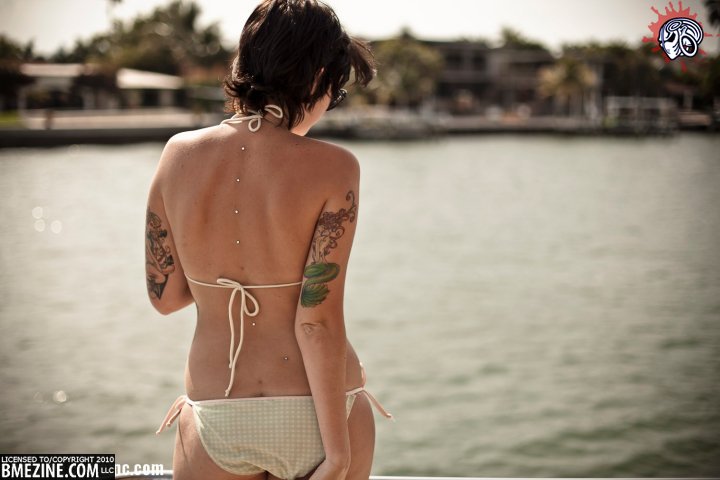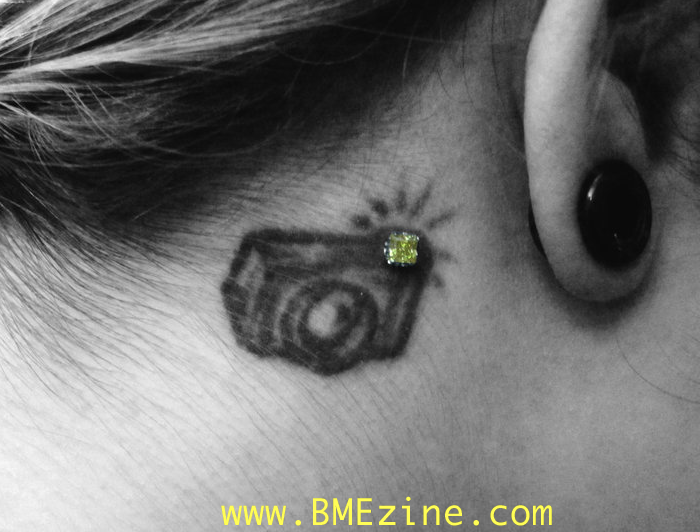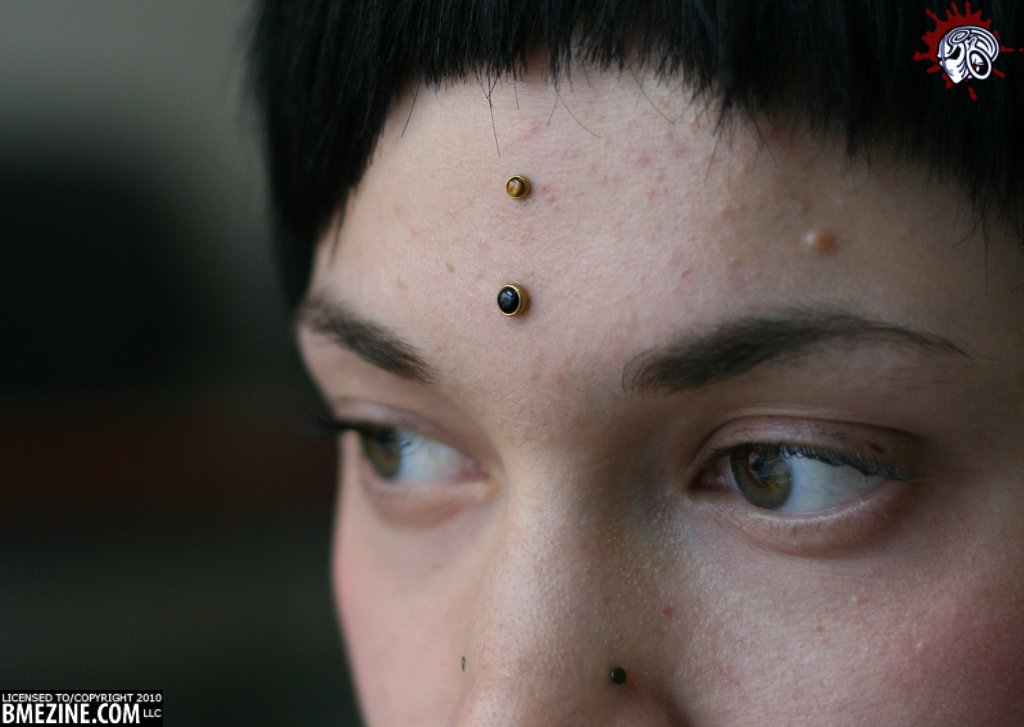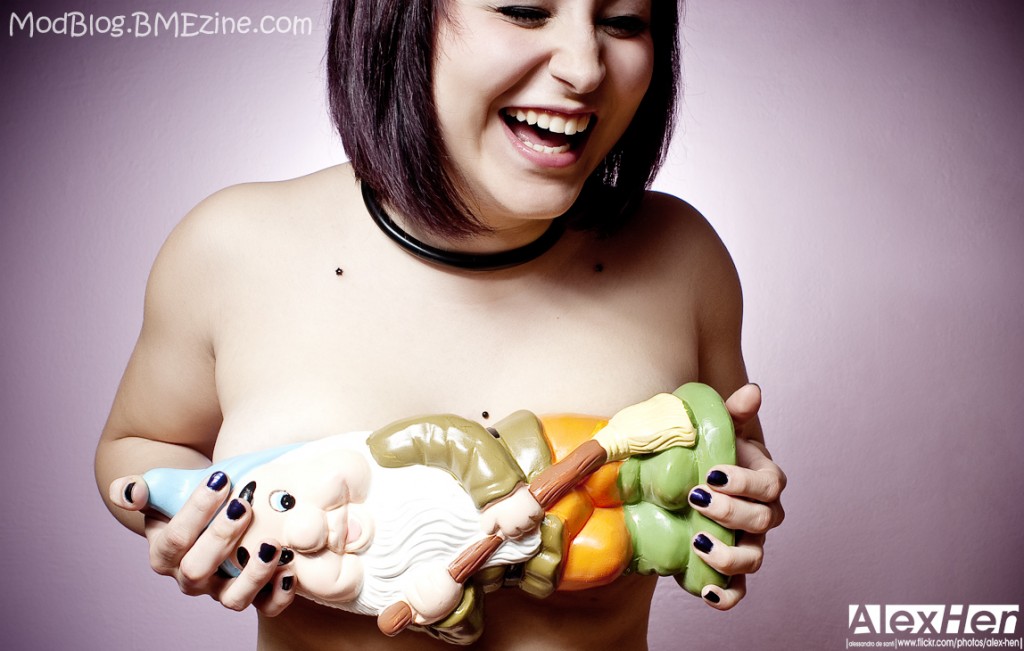
(Editor’s note: These articles were first published in The Point, the publication of the Association of Professional Piercers. Since part of BME’s mandate is to create as comprehensive and well rounded an archive of body modification as possible, we feel these are important additions.
Jim Weber and David Vidra, the article’s authors, have given BME permission to publish this article for the continued education of professionals and body art enthusiasts. Enjoy.)
After Luis Garcia’s article, titled Surface Anchor Legislation Issues, was published in the last issue of The Point (#48), many questions have been raised about the information presented, specifically regarding statements about the legality of using punches to install jewelry.
As an organization, the Association of Professional Piercers has historically declined to address the use of punches by piercers. Their use has always been considered outside of the scope of body piercing—much the same way the organization has viewed branding, scarification, and tattooing. But recent legal regulations, interpretations, and determinations about the use of punches with surface anchors have made continuing this position untenable.
From the APP’s position as an educational organization, it has become obvious that many piercers in our industry are in need of education on this subject. This is not to imply there is currently a willful ignorance among piercers, but simply that there is not an educated dialogue taking place in our industry on this topic. Recently, several states have prohibited the installation of surface anchors by body art practitioners. These legal prohibitions are, in many ways, a reaction by local medical and health boards to a procedure without a convincing record of safety. But several of these determinations are a direct result of what many medical and health boards consider the indiscriminate use of punches by our industry.
In his article, Luis stated punches are “illegal to use if the practitioner is not a licensed medical professional.” While this is true, this issue is much more complicated than this short statement explains.
Currently, dermal punches are classified, but not regulated by the FDA. They are class 1 devices, for use by medical professionals only. State medical boards determine who can use each classification of products, and what level of certification, education and/or competency testing each user must have. Unless your local health department or medical board specifically allows the use of class 1 devices by body art practitioners, the use of punches by body art practitioners is prohibited.
So what does this mean for those of us who are using punches to install surface anchors and other types of body jewelry? The answer, again, is not so simple.
State medical boards have the authority to decide who can use certain devices based on FDA classification. As of this writing, state medical boards have determined—based on their classification and intended use—to specifically prohibit the use of punches by our industry in Nevada, New Jersey, and Florida. When speaking with several health inspectors and medical board members about the issue, the reason many gave for the prohibition was the concern over the indiscriminate use of dermal punches in installing jewelry—as evidenced by videos of piercers they had seen on YouTube. Currently, the biggest problem with the increased popularization of the use of punches is not their legal status, but that in several states their wanton—and very public—use has contributed to the prohibition of surface anchors and other body art procedures.
In Nevada, not only is dermal punching and performing single-point piercings specifically prohibited, but also suspension, branding, scarification, and implants. In Florida, a determination by the Florida Board of Medicine stated dermal punching constituted the practice of medicine. Suspension is similarly categorized, as is branding, tongue splitting, implantation, and labia reduction. In New Jersey, the same medical board determination that specifically prohibited the use of punches by our industry—and classified surface anchors as implants—also prohibits branding and scarification if performed by a body art practitioner.
Other states that do not currently address their use by our industry will almost undoubtedly be doing so after prohibitions are in place in other states. Anyone who is familiar with legislation knows that, quite often, states adopt other state regulations—often word-for-word—after the first state has done the work writing them. As a piercer and body modification artist, the debate on whether to use punches to install jewelry is not as simple as what will be better for healing. There are legal implications, and these extend far past the relationship between you and your client; all piercers should be fully aware or the ramifications and possible repercussions of their decision to use punches.
In response to this, there are many among us who loudly proclaim, “It’s my right to use punches!” There is not an argument—at least from us—against it being our ethical right. But unfortunately, in most states, it is clearly not our legal right to use them. There is a big difference.
There are also those who argue for the punch as being an “industry standard.” Unfortunately, this argument doesn’t carry much weight, as needles have been the industry standard for the insertion of jewelry since the beginning of modern piercing. Admittedly, there is a history of punches being used, but not as the predominant instrument of choice. (And to many legislators, our industry simply didn’t exist before about twelve years ago—around 1997—which is when the first regulations on body art went into effect in Ohio and Oregon.)
Lastly, few responsible piercers will offer their services to clients without first securing liability insurance to protect themselves and their studio, both legally and financially. While both Professional Program Insurance Brokerage (PPIB) and National Insurance Professionals Corporation (NIPC) offer liability insurance that covers surface piercings and surface anchors, their coverage does not extend to procedures where the jewelry is installed with punches. (Western States Insurance does not specifically exclude coverage of anchors inserted with punches, but the company representative I spoke to stated the coverage is not valid if the instrument used for the procedure—or the procedure itself—is prohibited by local or federal law.) If no other argument affects a practitioner’s personal decision on whether to use punches, this one should.
In closing, we urge all body art practitioners to carefully consider every side of this debate when choosing what tools to use when installing surface anchors on their clients. All of us should be aware of the legal ramifications, for not only yourself and your clients, but for the rest of the industry.
And if you choose to use punches, please—for all our sakes—don’t post the videos on YouTube.
[This article is intended to start a discussion on the use of punches and the implication their use has on legislation. It is not to be considered the definitive argument for or against their use, but simply an effort to educate all industry professionals on some of the possible legal repercussions this use may bring to our industry. A lot of help went into researching this article. We would like to thank Jonny Needles and Luis Garcia for their help with New Jersey legislation, Maria Pinto from Industrial Strength Needles for her help with FDA questions, and the various members of health and medical boards who were able to clarify their state’s position on punches and surface anchors.
Anyone who has comments or corrections about information contained in this article, or has information about similar legislation issues in other states, is invited to e-mail us.]
Legislation Links
Florida:
http://www.doh.state.fl.us/environment/community/body-piercing/
http://www.doh.state.fl.us/environment/community/body-piercing/newinfo.htm
On 10-5-2002, a determination by the Florida Board of Medicine stated dermal punching constituted the practice of medicine. The practice of suspension is similarly categorized, as is branding, tongue splitting, implantation, and labia reduction. While the Medical Board has prohibited the use of punches by body artists, the authority to enforce this prohibition has not been granted to the Florida Health Board. As the Health Board oversees inspection and licensing (not the medical board) this leaves the enforcement of this determination in question.
Nevada:
http://www.cchd.org/body-art/tattoo-regs-sec8.php
Dermal punching and single-point piercings are specifically prohibited, as is suspension, branding, scarification, and the “implantation of jewelry under the skin.” The Nevada Board of Medical Examiners determined surface anchors are to be categorized as implants, therefore prohibiting their being performed by body art practitioners. The Nevada Health Board then enforces this prohibition.
[I was fortunate to speak to Jamie Hulbert, an Environmental Health Specialist for the Southern Nevada Health District, at the annual American Public Health Association conference in Philadelphia in early November. She stated the concern of the Health Board was about the risk of anaerobic bacteria with surface anchors, and listed this as one of the reasons for classifying them with implants. She said there was currently no discussion about repealing the ban.]
New Jersey:
http://www.state.nj.us/health/eoh/phss/bodyart.pdf
Earlier this year, the Director of the Health Department approached the New Jersey Health Board with questions regarding surface anchors. The Health Board then contacted the Medical Board, and was advised that surface anchors are to be considered implants, and are therefore prohibited under New Jersey Administrative Code 8:27-2.6. As stated in the preceding article, this same determination prohibited the use of punches by body art practitioners, in addition to implants, branding and scarification.
[Jonny Needles, of Dynasty Tattoo and Body Piercing in Newfield NJ, has been in conversation with Tim Smith, New Jersey Public Health Sanitation and Safety Program Manger and Head of the NJ Body Art Department in Trenton. Together with Luis Garcia (former APP Board member), they have been working to repeal the prohibition on surface anchors. According to Jonny, Mr. Smith has stated the intention of the NJ Health Board was to start a pilot program. This program, starting before the year’s end, would give an as-yet-undetermined number of piercers the authority to perform surface anchor piercings. Jewelry quality will be specified, client numbers are to be monitored, and clients will be provided a number to directly contact the Health Board to report complications. If this program is considered a success at its completion, other piercers can apply for the authority to perform this piercing. This program is to be open to all piercers who have 3 or more years of experience.
Both Jonny Needles and Luis Garcia are optimistic that the two groups can come to an agreement on the best way to allow this procedure while still looking out for the public interest.]
Author Bios:
David A. Vidra started in the piercing community in the 1980s. He opened northern Ohio’s first piercing studio, Body Work Productions, in 1993, and it remained in operation for more than 15 years. David founded Health Educators, the first industry-specific health education company for the body modification industry, with its focus on OSHA guidelines and all health and safety issues related to body modification. He has been honored by many organizations including the APP, the Society for Permanent Cosmetic Professionals (SPCP), and BME for his efforts in the educational arena and in legislation. He has worked as a nurse for more than 20 years, has recently completed his certification in wound care, and is celebrating his 15th year teaching Bloodborne Pathogens.
Started in California in 1994, the Association of Professional Piercers is an international non-profit organization that is committed to the dissemination of vital health and safety information about body piercing to the piercing community, health care professionals, legislators, and the general public. The APP holds its annual Conference each year in Vas Vegas, Nevada in the first week in May. More information, including free PDFs of The Point, can be found at safepiercing.org.












